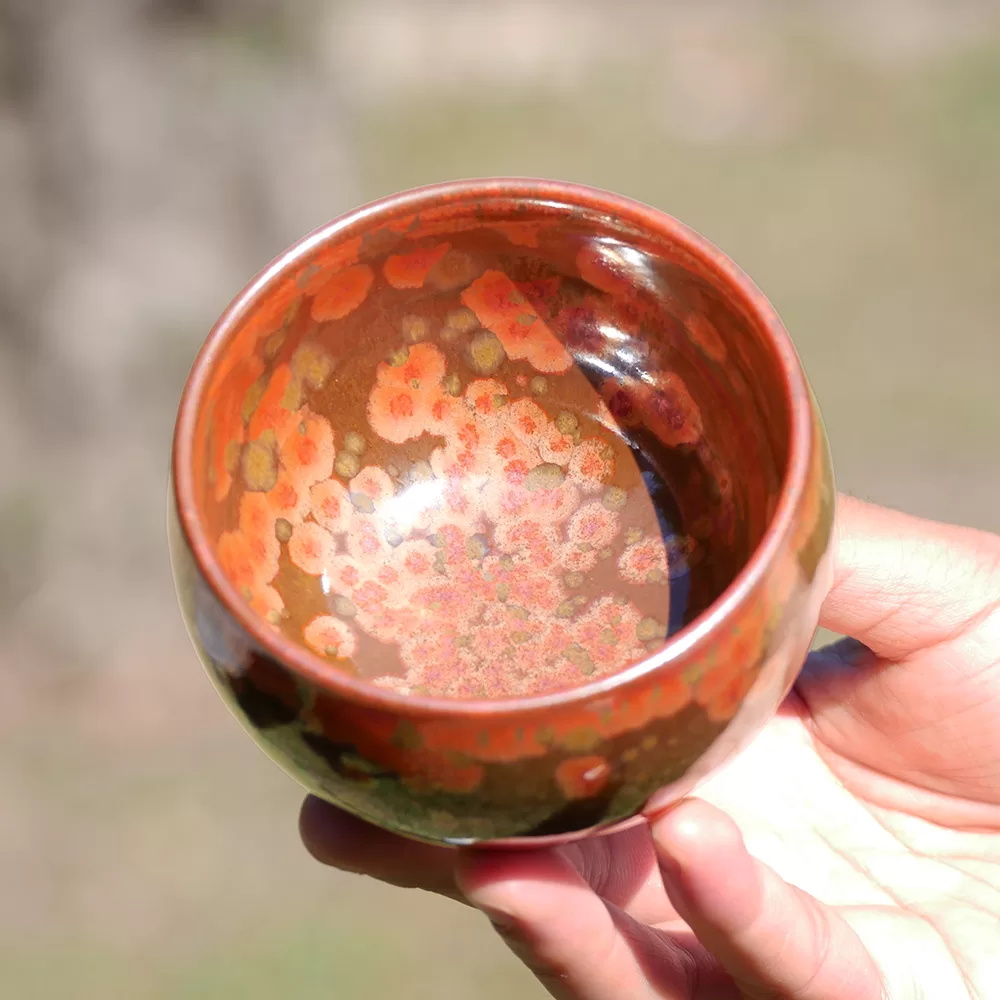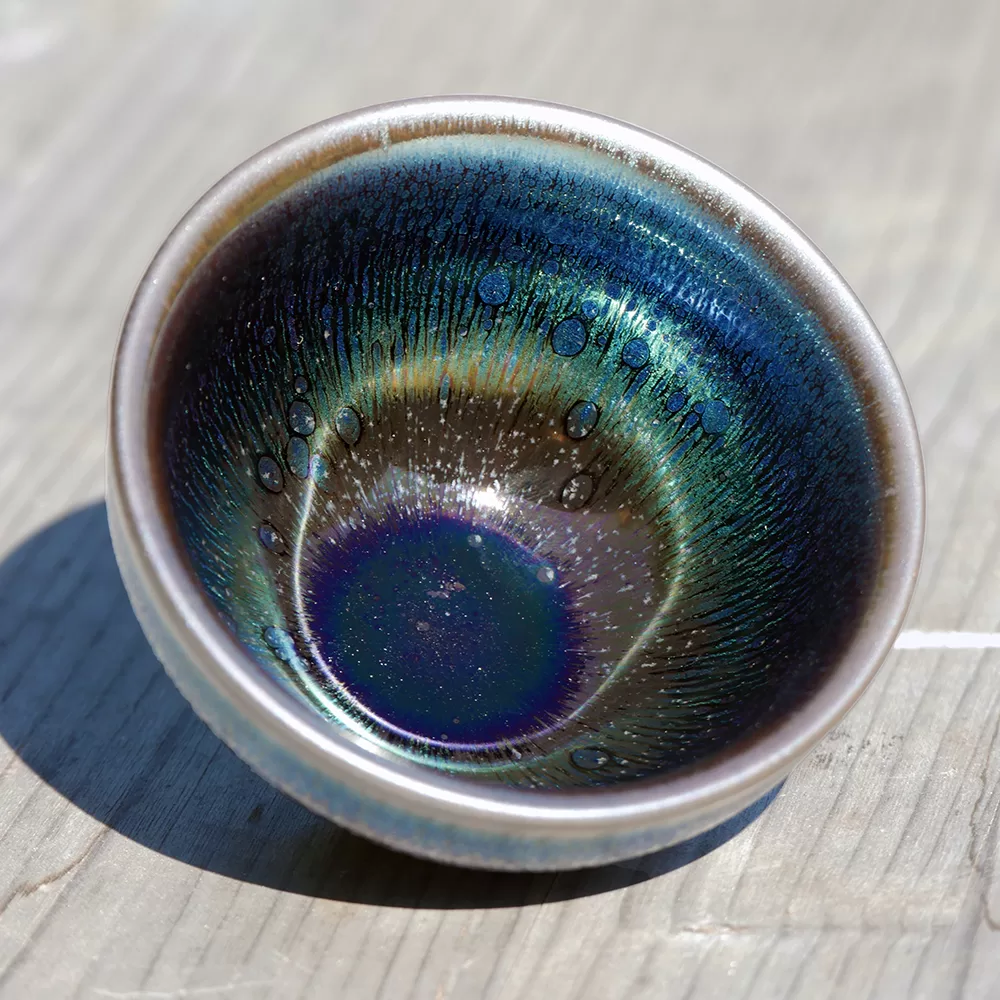Tenmoku ou Jian Zhan, une tasse raffolée par l’empereur chinois et les moines japonais, sans compter les grands daimyo au temps des guerriers japonais. La tasse temoku a fasciné des générations et des générations d’amateurs de thé, de céramique et de culture asiatique. En quoi cette tasse mystérieuse est-elle capable d’attirer autant d’attention et de passion? Nous allons découvrir son histoire et révéler sa vraie nature ensemble dans cet article.
Tasse à thé Tenmoku “Esprit bleu” , Chen Huizhong
Découvrir cette tasseHistory
Tenmoku tire son nom du temple de la montagne Tianmu (天目, Mandarin : tiān mù ; japonais : ten moku ; anglais : Heaven’s Eye) en Chine, où des bols en fer émaillés étaient utilisés pour le thé. Le style est devenu très populaire pendant la dynastie Song (960–1279). En chinois, il s’appelle Jian Zhan (建盏), ce qui signifie “bols Jian (pour le thé)”.
Selon les chroniques de 1406, l’empereur Yongle (1360-1424) de la dynastie Ming a envoyé dix bols Jian au shōgun Ashikaga Yoshimitsu (1358-1408), qui a régné pendant la période Muromachi. Un certain nombre de moines japonais qui se sont rendus dans des monastères en Chine ont également rapporté des pièces chez eux. À mesure qu’elles devenaient appréciées pour les cérémonies du thé, de plus en plus de pièces ont été importées de Chine, où elles sont devenues des produits très prisés. Trois de ces navires de la dynastie Song du sud sont si prisés qu’ils ont été inscrits par le gouvernement sur la liste des trésors nationaux du Japon.
Tasse à thé Tenmoku “Floral” , Qin Xuan
Découvrir cette tasseFeatures
It is composed of feldspar, limestone and iron oxide. The faster a piece is cooled, the blacker the glaze.
Tenmoku are known for their variability. During heating and cooling, several factors influence the formation of iron crystals within the glaze. A long firing process and a clay body that is also strongly colored with iron increase the possibility of the iron in the clay being drawn into the glaze. As the glaze melts, the iron may migrate into the glaze to form surface crystals, as in the "oil stain" glaze, or remain in solution deeper in the glaze for a rich, brilliant color. Oil stains are more common in oxidation firing.

Tenmoku cup debris on display at the Jingci Temple Art Museum, Hangzhou, China ©Xinhua News
A longer cooling time produces maximum surface crystals. Potters can "fire" a kiln to achieve this effect. During a normal firing, the kiln is slowly brought up to maximum temperature by adding fuel, then refueling is stopped and the kiln is allowed to cool slowly by losing heat to the surrounding air. To extinguish a kiln, the potter continues to add a limited amount of fuel after the maximum temperature is reached to slow down the cooling process and keep the glazes molten for as long as possible.













Beautiful and very interesting!!!
Thank you very much! We're currently at the Marché de Noel in La Défense, so don't hesitate to drop by and see the Tenmoku mugs!